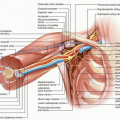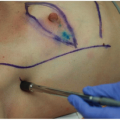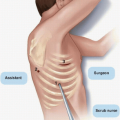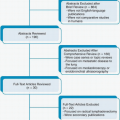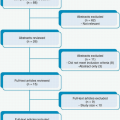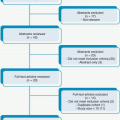Introduction
Breast cancer treatment is rapidly changing, leaving clinicians unsure of best practices. Although surgical resection and staging remains the cornerstone of breast cancer treatment, it does not exist in a vacuum. The most effective way to cure patients is multidisciplinary care. Careful consideration must be given to the appropriate amount of tissue resected in the context of multimodality treatment. The surgeon must balance the aggressiveness of surgical resection to affect a cure, the cosmetic outcome, and the quality of life for the patient. These issues are important because the majority of patients will be long-term survivors and deserve good quality of life for many years. Clinical research in the surgical treatment of breast cancer has focused on less invasive procedures, providing patients with lower morbidity while maintaining the same overall survival. The purpose of this manual is to provide surgeons with what the group consensus believes is necessary to adequately resect breast tumors, maintain high overall survival rates, and at the same time provide patients with good cosmetic outcomes and quality of life. The manual will address the four major procedures in the surgical treatment of breast cancer, namely partial mastectomy, mastectomy, axillary node dissection, and sentinel node biopsy. These chapters will address the steps necessary to ensure oncologically safe resection of breast cancers based on the literature with grading of the evidence so the reader can decide the importance of each step. The partial mastectomy section outlines the evidence for each step necessary to decrease positive margin rates and prevent second operations, especially for nonpalpable breast cancers. In the mastectomy section, the most important technical aspects of mastectomy operation are outlined, including a discussion of the oncologic safety of skin-sparing and nipple-sparing mastectomy. The axillary dissection section reviews the evidence and steps needed to complete a level I and II dissection and when to consider a level III dissection. In addition, there is a review of the new literature on which patients still require axillary node dissection. In the sentinel node chapter, the best methods of identifying sentinel nodes with the lowest false negative rate are laid out step by step. These basic technical steps are necessary for surgeons who may be new trainees entering practice, surgeons who may not perform these operations often to make sure of good quality for patients, and to standardize practice for experts for clinical trials.
The main goal of surgery for breast cancer is to obtain locoregional control. Proper patient selection for the appropriate surgical procedure is critical to achieving such control; Clarke et al1 predicted that for every four local recurrences at 5 years that are prevented, at least one death from breast cancer at 15 years is prevented. A large part of the challenge in providing optimal surgical treatment of breast cancer resides in the preoperative work-up and planning phase, during which the appropriate surgical therapy is determined. There are many safe avenues of treating patients, and surgeons must help their patients navigate a succession of complex decisions to achieve optimal, individualized treatment that incorporates the patients’ desires. Some of the main factors that must be considered when determining the appropriate route of surgery for breast cancer include the patient’s potential candidacy for breast-conserving surgery, the use of imaging studies to assess the patient’s disease, the type of neoadjuvant therapy the patient has received, and the patient’s BRCA mutation status. The main goal
of this manual is to outline the most important technical decisions necessary during an operation, and that is the focus of each chapter. Preoperative factors, although important, are beyond the scope of the following chapters and are thus summarized here.
of this manual is to outline the most important technical decisions necessary during an operation, and that is the focus of each chapter. Preoperative factors, although important, are beyond the scope of the following chapters and are thus summarized here.
Breast-Conserving Surgery Candidacy
The appropriate selection of patients for breast-conserving surgery is important to the ultimate success of therapy. The goals of breast-conserving surgery are to achieve negative margins, obtain good to excellent cosmesis, and facilitate the delivery of appropriate radiation therapy. Consensus standards for breast-conserving surgery have been developed by the American College of Surgeons, the American College of Radiology, the College of American Pathologists, and the Society of Surgical Oncology.2 Although cosmetic outcomes are an important part of the surgical treatment of breast cancer, the focus of this manual is to delineate the highest oncologic safety to prevent tumor recurrence, and thus oncoplastic techniques will not be reviewed here, as this manual focuses on oncologic safety.
Breast Imaging
Breast imaging is an ever increasing part of breast cancer screening and treatment planning. Mammography, the mainstay of breast imaging since the 1970s, is the only imaging modality that has been proven to reduce the breast cancer mortality rate. Therefore, mammography should always be included as part of the preoperative imaging of breast cancer patients.3,4 Ultrasonography should also be considered for treatment planning. Breast ultrasonography is an inexpensive modality that can be used to further characterize mammographically identified lesions, identify clinically apparent but mammographically occult lesions, and localize lesions in areas not easily visualized with mammography.5 Ultrasonography is also becoming more important in the axillary staging of patients with clinically suspicious axillary nodes and patients undergoing neoadjuvant systemic treatments.6
Stay updated, free articles. Join our Telegram channel

Full access? Get Clinical Tree


